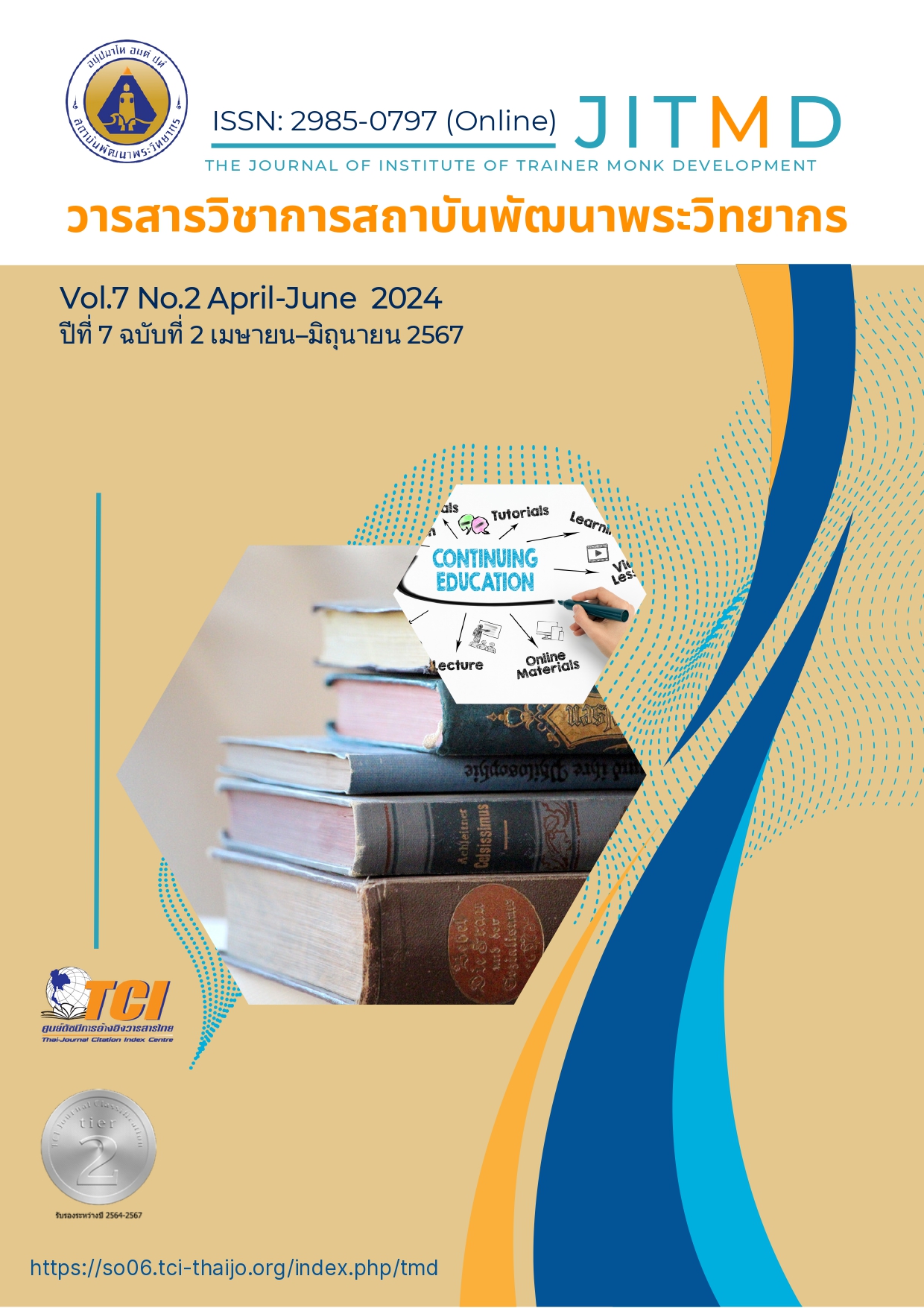Factor Analysis of The School Administrator’s Characteristics the New Era Under the Ratchaburi Primary Education Service Area Office 2
Main Article Content
Abstract
The purposes of this study were to study: Analyzing the characteristics of modern school administrators under Ratchaburi Primary Education Service Area Office 2. The research is divided into 2 phases as follows: 1) Study documents and interview 6 educational institution administrators, obtained through purposive selection according to specified criteria. The research tools used were semi-structured interviews. 2) Analyze the characteristics of modern school administrators. By asking 300 administrators and teachers using a stratified random sampling method distributed according to the size of the educational institution. Research tools include questionnaires. Statistics used in data analysis include frequencies, percentages, averages, standard deviations. and composition analysis. The findings of the research were as follows: Component the school administrator’s characteristics the new era under Ratchaburi Primary Education Service Area Office 2. There are 8 main components consisting of 1: Relationships with others has 4 sub-variables, with a total percentage of explainable variance equal to 5.598. 2: innovation and technology, has 4 sub-variables with a total percentage of explainable variance equal to 5.598. 3: Adaptation has 3 sub-variables with a total percentage of explainable variance equal to 5.491. 4: Morality and Ethics has 4 sub-variables with a total percentage of explainable variance equal to 5.439. 5 : Discipline and Personality has 4 sub-variables with a total percentage of explainable variance equal to 4.565. 6 : Intelligence has 3 sub-variables with a total percentage of explainable variance equal to 4.316. 7: Learning has 3 sub-variables with a total percentage of explainable variance equal to 4.109. 8: Emotional Intelligence, has 3 sub-variables with a total percentage of explainable variance equal to 3.452. which can explain 63.000% of the total covariance.
Article Details

This work is licensed under a Creative Commons Attribution-NonCommercial-NoDerivatives 4.0 International License.
บทความที่ได้รับการตีพิมพ์เป็นลิขสิทธิ์ของวารสารวิชาการสถาบันพัฒนาพระวิทยากร
ข้อความที่ปรากฎอยู่ในบทความที่ได้รับการตีพิมพ์ในวารสาร ถือเป็นความรับผิดชอบของผู้เขียนบทความ และข้อคิดเห็นนั้นไม่ถือว่าเป็นทัศนะและความรับผิดชอบของกองบรรณาธิการวารสารวิชาการสถาบันพัฒนาพระวิทยากร
References
กระทรวงศึกษาธิการ. (2564). นโยบายการจัดการศึกษา 2564-2565. กรุงเทพฯ:กระทรวงศึกษาธิการ.
โกสิทธิ์ เฟื่องสวัสดิ์. (2565). 6 คุณลักษณะผู้นำ ที่องค์กรต้องการหลังโควิด-19 จบ. สืบค้นข้อมูลเมื่อ 20 ธันวาคม 2565 จาก https://www.slingshot.co.th/blog/6leadership.
ชุธารินี ศรีปัญญา และคณะ. (2565). ความสัมพันธ์ระหว่างความสามารถทางดิจิทัลของผู้บริหารสถานศึกษากับการบริหารจัดการศึกษารับความปกติใหม่หลังวิกฤตโควิด-19 สังกัดสำนักงานเขตพื้นที่การศึกษามัธยมศึกษานนทบุรี. วารสาร มจร อุบลปริทรรศน์, 7(2): 1057-1070.
นันทภัค สุขโข. (2560). คุณลักษณะของผู้บริหารสถานศึกษาในการเข้าสู่ประชาคมอาเซียนตามความคิดเห็นของครูในสังกัดสำนักงานเขตพื้นที่การศึกษามัธยมศึกษา เขต 1. วิทยานิพนธ์ปริญญาศึกษามหาบัณฑิต. สาขาจัดการการศึกษา วิทยาลัยครุศาสตร์: มหาวิทยาลัยธุรกิจบัณฑิตย์.
สมหวัง ว่องไวไพศาล. (2558). การบริหารโรงเรียนสังกัดกรุงเทพมหานครในศตวรรษที่ 21. วิทยานิพนธ์ปริญญาปรัชญาดุษฎีบัณฑิต. สาขาวิชาการบริหารการศึกษา บัณฑิตวิทยาลัย: มหาวิทยาลัยศิลปากร.
สุชาติ ทองมา. (2560). รูปแบบภาวะผู้นำที่ส่งผลต่อประสิทธิผลการบริหารงานวิชาการของผู้บริหารสถานศึกษา สังกัดสำนักงานคณะกรรมการการศึกษาขั้นพื้นฐาน. วิทยานิพนธ์ปริญญาครุศาสตรดุษฎีบัณฑิต. สาขาวิชาการบริหารการศึกษา. มหาวิทยาลัยราชภัฏพระนครศรีอยุธยา.
สำนักงานคณะกรรมการการศึกษาขั้นพื้นฐาน. (2565). ประกาศสำนักงานคณะกรรมการการศึกษาขั้นพื้นฐาน เรื่อง นโยบายและจุดเน้นของสำนักงานคณะกรรมการการศึกษาขั้นพื้นฐาน ประจำปีงบประมาณ พ.ศ.2566. สืบค้นข้อมูลเมื่อ 22 กรกฎาคม 2565 จาก https://www.obec.go.th.
สำนักงานเลขาธิการสภาการศึกษา กระทรวงศึกษาธิการ. (2560). แผนการศึกษาแห่งชาติ พ.ศ. 2560 – 2579. สืบค้นข้อมูลเมื่อ 8 สิงหาคม 2564 จาก http://www.lampang.go.th/public60/ EducationPlan2.
สุวิมล ติรกานันท์. (2557). การสร้างเครื่องมือวัดตัวแปรในการวิจัยทางสังคมศาสตร์แนวทางสู่การ ปฏิบัติ. กรุงเทพฯ: โรงพิมพ์จุฬาลงกรณ์มหาวิทยาลัย.
Comrey, A. L. and Lee, H. B. (1992). A first course in factor analysis. Hillsdale. New Jersey: Erlbaum.


